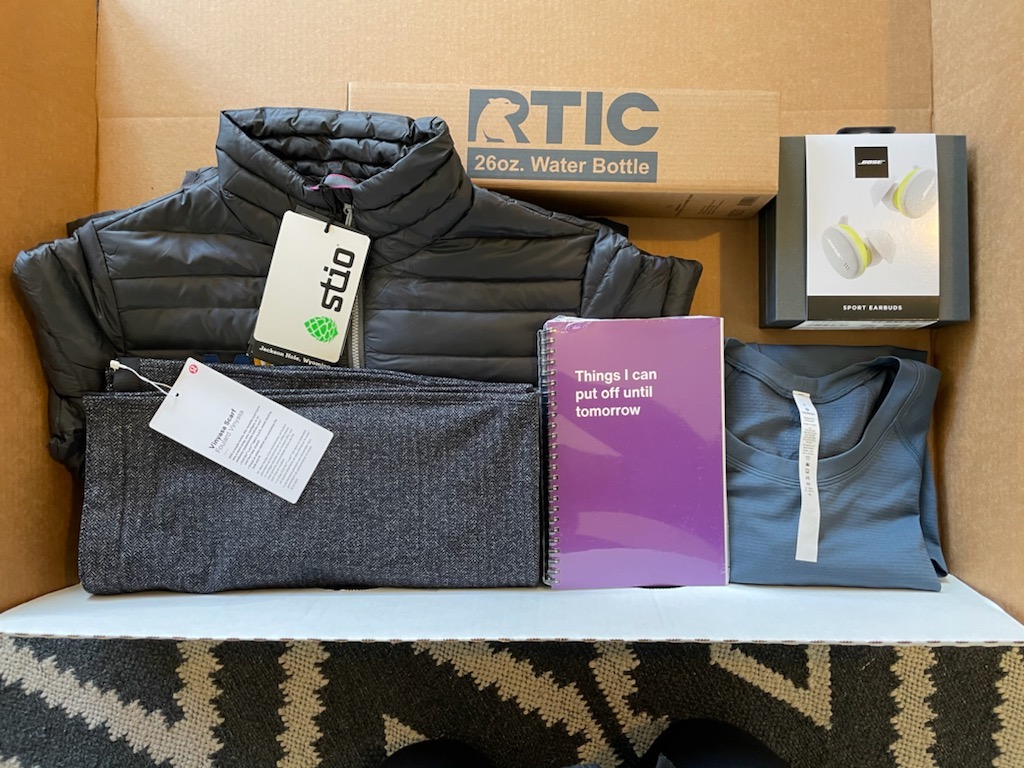We’re a year into the COVID-19 pandemic and thanks to groundbreaking vaccine development, we’re starting to see the light at the end of a long and difficult tunnel. We all know things won’t snap back to normal all at once. As an experiential marketing professional in the business of bringing people together for events, meetings, and corporate holiday parties, I’ve pivoted and adapted my own business over the last year and am optimistic about the emerging trends I see taking shape.
Whether together in person or together apart, corporate events, team-building, and employee appreciation are attainable in 2021.
Hybrid and split-attendance events.
Making in-person events safe in 2021 requires expertly-executed safety and logistical feats ranging from catering (think: out with buffets and in with individually packaged take-out style meals), to dance floor limitations, and socially-distanced seating. Attendees might be required to provide proof of vaccination and/or submit to testing ahead of the event while event hygiene and cleaning procedures will be paramount. Finally, and a critical piece to any event planning endeavor, venue constraints may force planners to limit the number of attendees.
One way to reduce the size of in-person events is through hybrid events. Hybrid events, produced in such a way that people can attend them both in person and virtually, are emerging as the dominant event trend of 2021. In before times, the virtual portion of an in-person event was likely a lesser experience than being there live and in the flesh. The challenge for event producers in 2021 is elevating the virtual experience to be as close to in-person as possible. Swag boxes, cocktail kits, aggregated content, trivia and interactive games, digital photo booths and social mosaics are just the tip of the iceberg of how to produce meaningful and memorable virtual experiences.
Another iteration is the split-attendance event where festivities take place on multiple days (think: Thursday and Friday) so as to maximize the number of attendees able to participate in person while limiting the number of people at each event.
Swag boxes.
Many companies are currently still allowing or requiring employees to work remotely. With both internal and external meetings as well as team connections happening virtually, there is a more urgent need to bolster morale and foster a sense of community than in times when employees and clients can be together in the office on a regular basis. In response, we’re seeing event and office culture budgets reallocated to deliver team- and affinity-building experiences directly to an employee’s or client’s home in the form of swag boxes.
So what goes in a swag box, you ask? It’s not just about putting a bunch of goodies in a box and shipping it. Rather, in our business, we apply the same precision planning and logistical execution to our swag boxes that we do to in-person events to ensure that the box itself delivers a memorable and customized experience to each recipient.
As one client recently wrote to us: “Thank you for helping us keep the energy alive.”

Swag boxes can also be a component of hybrid events where attendees joining the festivities remotely receive cocktail kits or other items to improve the virtual experience.
Virtual entertainment
Corporate events often have a celebrity performance or speaker to surprise and delight attendees. We expect to see this same concept executed more creatively this year with surprise celebrity appearances on a company all hands Zoom meeting or celebrity pop-ups in smaller team meetings.
The beauty of this trend is that it eliminates geographic and travel constraints for the talent which could bolster budgets and will still deliver unforgettable experiences for participants. Imagine Steve Carrell leading your monthly budget meeting as Michael Scott?
Micro retreats.
While a large event may be off the table for your company this year, multiple bespoke gatherings for small groups of employees or clients offer a safer option while still fostering team-building and appreciation.
A small group of attendees at a micro retreat can be easily screened for COVID-19 through vaccination documentation or testing, while venue constraints and social distancing pose less logistical maneuvering than at a large event. Imagine a communications team retreat of 10 people in a controlled environment with sunrise yoga, a cooking class and other team-building activities. Additionally, micro retreats can be produced locally to avoid unnecessary travel.
By thinking creatively and taking appropriate safety measures, it is possible to bring your employees or clients together and foster a sense of community in 2021. From my perch as experiential marketing and event professional, I am more optimistic than ever and apparently I’m not alone: Venues are booking up for fall and winter for events big and small.


